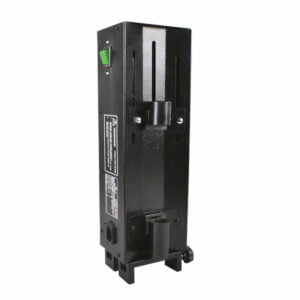Physics
-
Experiments
Size of Particle Experiment
OBJECTIVES
- To measure the width/thickness of the given samples by analyzing the diffraction pattern.
PRINCIPLE
The characteristics of light such as interference and diffraction can be understood when light is studied as a wave phenomenon. Interaction of waves with matter results in either transmission, reflection, absorption, or diffraction of the wave. When the size of the matter is comparable to the wavelength of the wave that it interacts with, a phenomenon called diffraction occurs. Diffraction of light due to particles is a function of the size of the particle and the wavelength of the light incident. It is possible to measure the size of a particle by studying the diffraction patterns created by it.
KEY FEATURES
- Easy Adjustable Laser: The multiple degrees of freedom on the laser mount helps in the effortless movement of the laser source. This helps in aligning the laser source with the sample quite easily.
- Laser Range Finder: The addition of a laser range finder allows the user to use any standard wall as a screen, increasing the distance between the screen and the sample. Thus, the diffraction pattern can be seen distinctly and thus increasing the accuracy of the readings.
- Multiple Samples can be Tested and Verified: The modular setup helps in measuring the diameters of different samples and other everyday objects as well.
WHAT YOU NEED
- OB1 Optical Bench Set 0.8m 1
- HA003 Laser Source Holder 1
- HA008 Grating Holder 1
- HA024 Screen Holder 1
- AC010 Laser Distance Meter 1
- AC018 Diffraction Grating 1
- AC012 Frame With Thread Type 1 1
- AC014 Frame With Thread Type 2 1
- AC016 Frame With Thread Type 3 1
Complete Equipment Set with Instruction Manual from catalogue.
SOP1-C -
Experiments
Single Slit Experiment
OBJECTIVES
- To find the wavelength of a given laser using the slit of known width.
- To find the slit width knowing the wavelength of light used.
- Proving the concept of the Heisenberg uncertainty principle.
PRINCIPLE
Diffraction is a phenomenon of bending of waves when it encounters obstacles or narrow opening. A basic setup to observe diffraction consists of a laser, a slit, screen placed at a distance. The wavefronts are partially obstructed by the slit. The intensity distribution of the diffraction pattern consists of a series of light and dark fringes with the intensity distribution symmetric along the central axis. The primary peak is called the central maxima. The corresponding peaks are called secondary, and tertiary maxima. This is studied using the single-slit experiment.
KEY FEATURES
- Precise Optical Alignment: The optical alignment of the components is attained by the optical bench, the set-up time is faster and experimentation is easy.
- Digital Lux Meter with Transverse Saddle: The digital Lux meter enables the measurement of light intensity. The transverse saddle helps in the fine movement of the Lux meter perpendicular to the direction of light.
WHAT YOU NEED
OB1 Optical Bench Set 0.8m 1 HA003 Laser Source Holder 1 HA012 Adjustable Collimating Slit Holder 1 HA512 Travelling Light Sensor Holder 1 DP1 Data Processor 1 PH61022D/2 Power Supply for Light Source 1 Complete Equipment Set with Instruction Manual from catalogue.
SSE1-C -
Accessories
Electromagnet Set Assembly
The Electromagnet set includes U core, pole pieces coils (x 2), and coils (x 2) mounted on two uprights.
Specifications:
- Coils
• 500 turns
• Current: 7A(Max.)
• Wire: 17 SWG, Copper
• Connections: 4mm safety socket - U Core
• 150 x 130mm (Lx H), 40 x 40mm cross-section - Pole Pieces
• Length = 75mm
• Material: Ferromagnetic
UP025 - Coils
-
Accessories
Rotating Table Assembly
A simple, smooth, and compact rotating table. The rotating table used is extremely smooth to operate. It is a single assembly that holds a glass sample, analyzer, and light sensor, thus minimizing the size of the whole equipment. Smooth rotation makes measurement continuous and accurate.
UP030 -
Accessories
Telescope Assembly
The telescope on the rotating table is mounted with bearings for smooth rotation. The diffraction grating mounted is mounted at the center of the rotating table. The telescope is easy to focus on and operate. The angle of the rotating arm has a least count of 0.1° for accurate measurement of the spectral lines.
UP035 -
Accessories
Spectrum Tube Power Supply Assembly
The built-in power supply makes a more compact system with easier changing of the discharge tubes. Easy power connection and no unnecessary wire intrusions.
Specifications:
- Input Voltage: 220V, 50 Hz AC.
- Output Voltage: 0-5000V (open circuit).
- Socket: Spring loaded.
UP040






